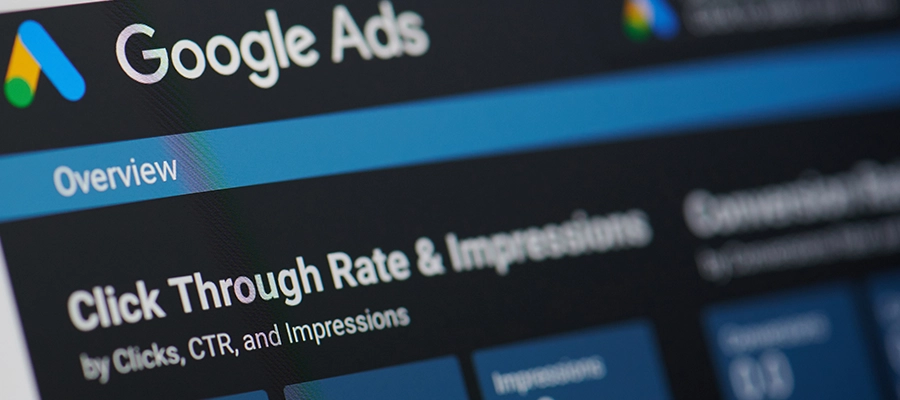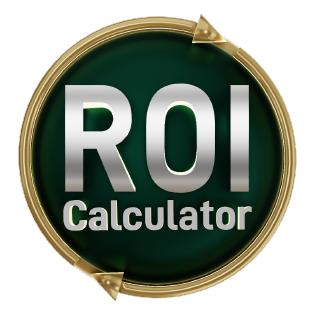In the extensive digital domain, where every click counts and every impression matters, the power of effective advertising cannot be overstated. Did you know that compared to other search engines, a staggering 63% of users click on paid search results on Google? In contrast, Amazon, YouTube, and Bing lag behind at 15%, 9%, and 6%, respectively. This statistic alone explains the immense potential that lies within Google Ads for businesses seeking to expand their online presence and drive results.
In this blog, we will navigate through the intricacies of Google Ads, unveiling its secrets & strategies and equipping you with the knowledge & tools to harness its advertising prowess. From understanding the fundamentals to mastering the best practices, our guide covers it all, making your journey with Google Ads management insightful and downright transformative.
What are Google Ads?
At the heart of the digital advertising revolution stands Google Ads, a powerhouse that has transformed the way businesses advertising on Google connect with their audience. Simply put, Google Ads is a dynamic online advertising platform that allows businesses to showcase their products and services to a global audience actively searching for solutions.
Stats Alert: 33% of people click on Google ads because they answer a question. On the other hand, 26% of them said that they click on ads because they mention a familiar brand.
As Jeff Baum, an Associate Director of Services at Hanapin Marketing, aptly says,
"My key takeaway from the rise of local-based searches is that granularity is key to a successful paid search account."
Why Use Google PPC?
Google Pay-Per-Click (PPC) advertising is a digital marketing power tool that has businesses worldwide harnessing its undeniable benefits. Let's break it down into a list of compelling advantages of PPC advertising for businesses:
Precision Targeting: PPC lets you reach your target audience accurately, ensuring your message resonates with the right people.
Budget Control: With flexible budget options, you can set your spending limits, making PPC suitable for businesses of all sizes.
Immediate Results: Unlike other marketing methods, PPC delivers near-instant results, allowing you to see the impact of your Google Ads campaigns setup quickly.
Measurable ROI: The beauty of PPC lies in its trackability; you can measure your Return on Investment (ROI) with precision, making it easier to optimize your strategy.
Adaptability: PPC allows you to adjust your campaigns in real time based on performance, ensuring you get the best results.
Enhanced Brand Visibility: Paid ads boost your brand's visibility on search engine results pages, enhancing brand recognition.
Competitive Edge: Outshine competitors by bidding on keywords that matter most to your business, securing top positions in search results.
In the fast-paced digital landscape, Google Ads management emerges as a formidable ally, offering unmatched targeting, control, and results—powerful reasons businesses turn to it for driving success in the digital age.
Case study :In a challenging landscape where PPC investments often yield underwhelming results, 686, an eCommerce technical apparel brand, sought to elevate its game. With an initial ROAS of 160%, their goal was to soar to 350-400%. The saturated athletic fashion market posed a formidable challenge, but a strategic approach paved the path to success.
The effective Google Ads strategies employed were nothing short of transformative:
- Location-Based Targeting: Precision became the watchword as 686's PPC campaigns zeroed in on U.S. locations where cold-weather enthusiasts resided.
- Remarketing: Recognizing the importance of nurturing the buyer's journey, an aggressive remarketing strategy was launched across Google's Display Network and Facebook, providing multiple touchpoints for enhanced conversions.
- Optimized Shopping Campaign and Product Feed: Creativity met commerce as product feeds were revamped, adorning SERPs with compelling visuals and transparent pricing.
All these efforts were bolstered by meticulous keyword optimization, bid management, and continuous website conversion enhancements. The result? A spectacular 562% YoY SEM revenue increase, an impressive 186% surge in conversion rates, a remarkable 303% ROAS boost, and a commendable 67% reduction in cost per conversion. This case study exemplifies how strategic precision and creative flair can make PPC challenges successful.

How Does Google Ads Work?
Understanding how Google Ads works is the key to unlocking its potential in the digital advertising ecosystem. Here is a step-by-step breakdown of the ad auction process to better understand how it works:
Step 1: Keyword Selection
Advertisers choose relevant keywords and phrases they want to target with their ads. These keywords determine when and where their ads will appear.
Step 2: Bidding
Advertisers set bids for each keyword, indicating the maximum amount they're willing to pay when someone clicks on their ad (Cost-Per-Click or CPC).
Step 3: Ad Rank Calculation
Google calculates the Ad Rank for each ad in real-time based on bid amount, Quality Score, and other factors. Ad Rank determines the ad's position on search results pages.
Step 4: Ad Quality Score
Quality Score is determined by the relevance of keywords, ad copy, and landing page to the user's search query. Higher Quality Scores can lead to lower costs and better ad positions.
Step 5: Ad Placement
Ads are placed on search results pages or partner websites based on their Ad Rank. The highest-ranking ads appear at the top, while others follow in descending order.
Step 6:Auction Outcomes
When a user searches for a keyword, Google runs an auction to determine which ads to display. The winning ads are shown to the user, and advertisers pay only when someone clicks on their ad.
But there's more beneath the surface. The Quality Score is a pivotal yet mysterious factor that evaluates your ads' relevance and user experience. The higher your Quality Score, the greater your prospects for running successful Google Ads. It's a game of precision and optimization.
Then comes ad placements—a strategic choreography across Google's search results and partner networks. Your ads appear where your target audience is most likely to encounter them, whether at the top of search results or display placements on websites they frequent.
Google Ads Pricing Models
Navigating the pricing intricacies of Google Ads is like choosing the right tool for the job. Let's break down the three primary pricing models—CPC, CPE, and CPM—in a simplified table to illuminate the path:
| Cost-Per-Click (CPC) | Cost-Per-Engagement (CPE) | Cost-Per-Mille (CPM) |
|---|---|---|
| You pay when someone clicks on your ad. | You pay when users engage with your ad (e.g., clicks, video views). | You pay for every 1,000 ad impressions, regardless of clicks or engagements. |
| Ideal for driving website traffic and conversions. | Effective for boosting user interaction. | Helpful in increasing brand visibility. |
| You have control over spending with bid adjustments. | Suitable for brand awareness campaigns. | Suitable for campaigns focused on exposure. |
Google Ads Best Practices
Mastering the art of Google Ads demands both proficiency and strategic skills that set you apart in the digital arena. Let's dive into some Google Ads best practices, each encapsulated within its guiding subheading:
1. Keyword Mastery:
- Begin by conducting thorough keyword research to unearth high-relevance terms.
- Organize your keywords into well-structured ad groups, promoting clarity and focus.
- Employ negative keywords to filter out irrelevant traffic, ensuring your budget is spent efficiently.
2. Compelling Ad Copy:
- Craft concise and persuasive ad copy that speaks directly to your target audience.
- Utilize ad extensions to provide additional information and increase click-through rates.
- Regularly, A/B tests different ad variations to discover what resonates most with your audience.
3. Landing Page Excellence:
- Ensure your landing pages align seamlessly with your ad's message and intent.
- Optimize landing page load times for a seamless user experience.
- Employ clear and compelling calls-to-action (CTAs) that guide users toward desired actions.
4. Budget Management:
- Set daily and campaign-level budgets aligned with your advertising goals.
- Monitor budget allocation and adjust as needed to prioritize high-performing campaigns.
- Leverage Google's automated bidding strategies to optimize spending.
5. Quality Score Proficiency:
- Prioritize ad and landing page relevance to boost your Quality Score.
- Enhance click-through rates (CTR) through compelling ad copy and targeting.
- Regularly review and refine your keyword selection and ad groups to maintain a high-Quality Score.
6. Continuous Monitoring and Optimization:
- Regularly monitor campaign performance and key metrics.
- Implement data-driven adjustments, including bid management and ad scheduling.
- Keep a watchful eye on negative keywords and refine them based on user behavior.
7. Conversion Tracking:
- Implement conversion tracking to measure the impact of your campaigns on business goals.
- Utilize data to optimize bidding strategies and allocate resources effectively.
- Leverage attribution models to gain insights into the customer journey.
8. Ad Scheduling:
- Strategically schedule ads to reach your target audience during peak engagement times.
- Align ad schedules with your business's operating hours and peak conversion periods.
- Regularly review ad schedules and adjust based on performance trends.
Here is a quick Do’s and Don'ts overlook:
| Do's | Don'ts |
|---|---|
|
|
Vajra Global - Empowering Your Digital Growth
At Vajra Global, we are your comprehensive solution for all things Google Ads. Our team comprises certified Google Ads professionals, each a seasoned expert in crafting and overseeing high-impact ad campaigns. From the inception of keyword research to the art of ad creation and the finesse of campaign management, we've got you covered.
Our paramount goal is to ensure you reap the maximum return on investment from your ad expenditure. With a track record of proven success, we've consistently helped our clients achieve just that. So, if you're in search of a dedicated team capable of optimizing your Google Ads budget to its fullest potential, don't hesitate to reach out to us today. Let us demonstrate how we can turn your advertising goals into tangible, revenue-driving results.


